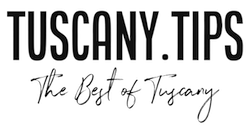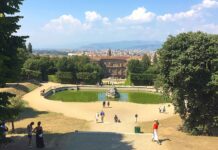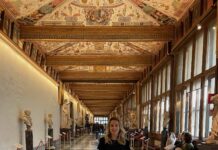What type of art was produced last century? To answer this question, there’s the Museo del Novecento in Florence. This Florentine museum primarily focuses on 20th-century Italian art, though it also includes works from the 21st century. Visitors will find dedicated areas for both a permanent collection and temporary exhibitions, all housed within a historic building in the city center, just steps from the Santa Maria Novella train station. This article provides everything you need to plan your visit.
Table of Contents
The Historic Site of the Museo del Novecento
Upon entering the beautiful Santa Maria Novella Square in Florence, you see the imposing Basilica of Santa Maria Novella on one side, and on the opposite side stands the Museo del Novecento.

The building now housing the Museo del Novecento has served various functions: initially founded in the early 13th century as a hospice for pilgrims dedicated to Saint Paul the Apostle, it reflects a time before the Basilica of Santa Maria Novella existed and was located near the Porta a San Paolo.
Over the years, and particularly from 1345 onwards, the hospice transformed into a hospital proper, managed by the pinzocheri, Franciscan tertiaries, and dedicated to serving “feverish poor sick” individuals. This place of charity and healing grew over the centuries, receiving donations and bequests that allowed for significant expansions and modernizations.
During the Renaissance, under the patronage of the Arte dei Giudici e Notai and led by Benino Benini, the hospital was deeply reorganized and expanded. Benini promoted the construction of a loggia, a defining element of the complex, designed by Michelozzo and decorated with tondi by Andrea della Robbia. This period marked the consolidation of the hospital as a center of charity and health, including the incorporation of a female monastery and the construction of a Franciscan convent.
In the 18th century, with reforms by Pietro Leopoldo leading to the suppression of many religious entities, the hospital was closed and transformed into one of the four Leopoldine Schools of Florence, aimed at educating the city’s youth. This educational function lasted until the 20th century, going through a phase as a professional school until its final closure in 1976.
After a period of inactivity and various restoration phases, the building now houses the Museo del Novecento, dedicated to 20th-century art, perpetuating the rich and multifaceted history of this monumental Florentine complex. The Museo del Novecento was inaugurated on June 24, 2014.
Haven’t booked accommodation yet? Check out our tips for hotels in Florence.
Inside the Permanent Collection of the Museo del Novecento in Florence
The Museo del Novecento’s permanent collection in Florence includes the Alberto Della Ragione Collection, donated to the city after the flood of 1966, and the legacy of Ottone Rosai, which arrived at the Municipality of Florence in 1963 by the wish of his widow Francesca Fei and his brother Oreste.
The Ottone Rosai Collection
Ottone Rosai was born in Florence in 1895 and lived until 1957, when he passed away in Ivrea
Among his works, we find a series of portraits of people dear to him: poets, critics, and artists like Piero Bigongiari, Eugenio Montale, Giuseppe Ungaretti, Giorgio De Chirico.

Another section includes the works of ceilings and panoramas of Florence from that era.

During my visit in May 2024 with my nine-year-old daughter Aurora, we stopped to sit on a bench, and Aurora began to observe one of Rosai’s works to draw it in her sketchbook as a keepsake of our visit. Instead of simply using a smartphone to capture the moment with a photo or video, she chose to savor the artwork slowly, carefully observing its lines, shadows, and lights, and how another artist interpreted reality.

The Alberto Della Ragione Collection
The Alberto Della Ragione Collection, donated to the city of Florence shortly after the flood of 1966, was enriched with works by Giorgio De Chirico, Filippo De Pisis, Gino Severini, Giorgio Morandi, Mario Mafai, Renato Guttuso, Felice Casorati, among others.

Aurora found the piece “La Cinese” particularly interesting and asked me to photograph it to send the photo to her sister, Gaia, who couldn’t come with us. “Look, Gaia, the little Chinese girl made by Arturo Martini in clay (terracotta).”
Special Exhibitions at the Museo del Novecento
Below are the new exhibitions:
MP5 – The Third Dimension, June 22, 2024 to December 31, 2025
To mark the tenth anniversary of the Museo Novecento, renowned artist MP5 was invited by director Sergio Risaliti to create a bold and site-specific work that transforms the museum’s architecture. The result is The Third Dimension, a striking and immersive installation that spans the two levels of the museum’s loggias.
The artwork unfolds like a long ribbon of black-and-white figures painted directly onto the walls, reminiscent of the grandeur of Michelangelo’s Sistine Chapel frescoes. These figures emerge from light, moving in a fluid choreography that challenges space and time, forming a visual narrative where bodies intertwine and engage with their surroundings.

MP5’s work is known for its sharp, uncompromising style, and in The Third Dimension, the artist delves into themes of community, sensuality, and difference. The installation transcends traditional genres, embracing an inclusive and poetic visual language that speaks to the heart, creating a deep connection with the viewer while boldly celebrating intimacy and diversity.
Lorenzo Bonechi – La Città delle Donne, July 4 to October 29, 2025
The Museo Novecento in Florence will open a new exhibition in July 2025 dedicated to the Tuscan artist Lorenzo Bonechi. Titled Lorenzo Bonechi – La città delle donne, the show celebrates the 70th anniversary of his birth and brings together 25 works in dialogue with the museum’s permanent collection.
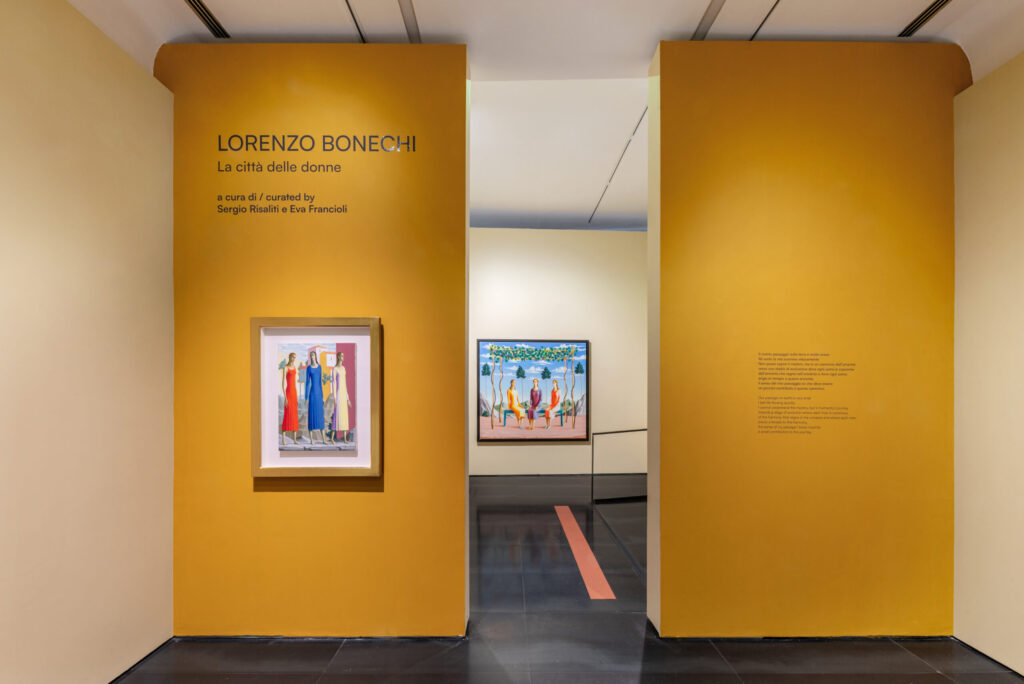
Curated by Sergio Risaliti and Eva Francioli, in collaboration with the Lorenzo Bonechi Archive, the exhibition will run from July 4 to October 29, 2025. Visitors will discover an artistic journey where ethereal female figures meet minimal landscapes and architectural visions, evoking a sacred dimension that blends spirituality with humanity.
Born in Figline Valdarno in 1955 and active until his untimely passing in 1994, Bonechi emerged in the late 1970s and became part of the vibrant Italian art scene of the 1980s.
His practice, rooted in drawing and later focused on tempera and oil painting, developed a highly personal language influenced by Tuscan Trecento masters and Byzantine iconography.
Female figures, at once earthly and divine, occupy a central place in his work, embodying ideals of purity, transcendence, and universal harmony. Internationally acclaimed, Bonechi exhibited at major institutions such as the Tate Gallery in London, the Smithsonian Hirshhorn Museum in Washington, and the National Museum of Modern Art in Tokyo.
The Florence retrospective aims to reposition him among the most important figures of contemporary Italian art, offering visitors a chance to engage with his profound and poetic vision.
Haley Mellin – The Third Dimension, June 24 to October 29, 2025
From June 24 to October 29, 2025, the Museo Novecento in Florence will host the first solo exhibition in an Italian institution by American artist and environmentalist Haley Mellin.
Known for her practice that merges painting with environmental activism, Mellin is the founder of the non-profit initiative Art into Acres, which has helped protect millions of hectares of forests through collaborations with local and Indigenous communities.
Curated by Sergio Risaliti and Stefania Rispoli, the exhibition unfolds across four rooms and explores the deep connection between Mellin’s artistic work and her commitment to conservation, presenting her art as a form of environmental activism.
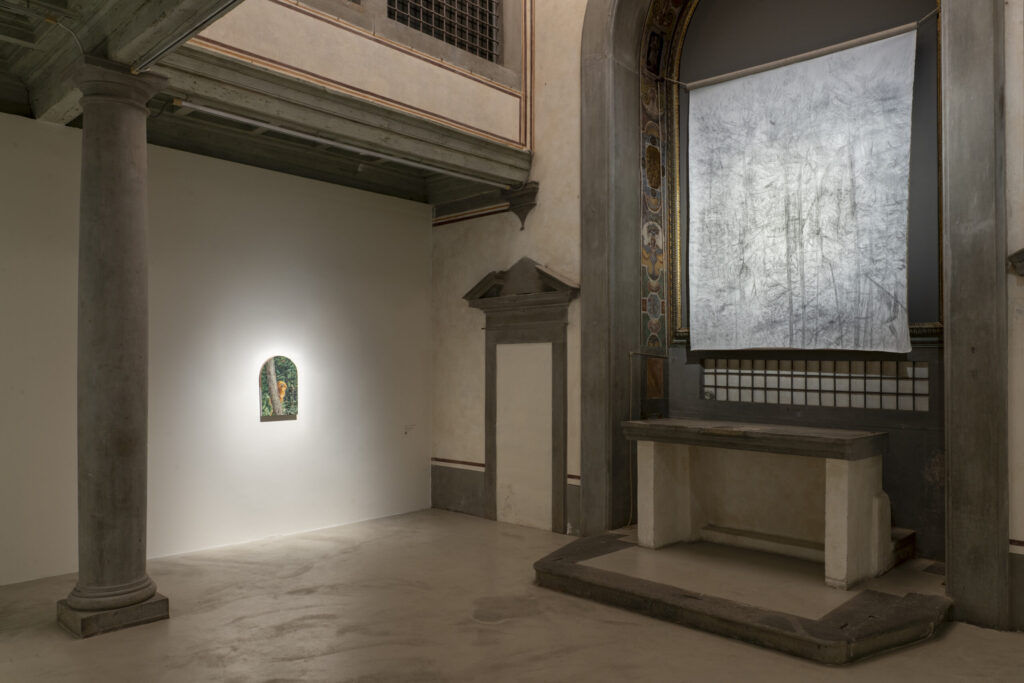
Mellin’s paintings, often characterized by subtle, almost ethereal brushwork, depict the landscapes she actively works to preserve, offering viewers a meditation on nature, memory, and human responsibility. In Florence, the exhibition features small-scale plein air works created in harmony with seasonal rhythms and with minimal ecological impact.
Alongside the show, Mellin has also launched a collaboration with the Museo Novecento to regenerate the Giardino delle Leopoldine, where around 300 native plants have been reintroduced, reviving the historic cloister garden as both a cultural and ecological sanctuary.
Marion Baruch – Un passo avanti tanti dietro, March 15 to October 8, 2025
From March 15 to October 8, 2025, the Museo Novecento in Florence will host Un passo avanti tanti dietro, the most comprehensive retrospective ever dedicated to Marion Baruch in an Italian institution.
Curated by Sergio Risaliti and Stefania Rispoli, the exhibition also extends to the spaces of Manifattura Tabacchi and Polimoda, tracing nearly seventy years of the artist’s restless and transformative career. Born in 1929 in Timișoara, Romania, Baruch has lived between Israel, France, and Italy, developing a cosmopolitan practice that crosses fashion, design, and visual arts.
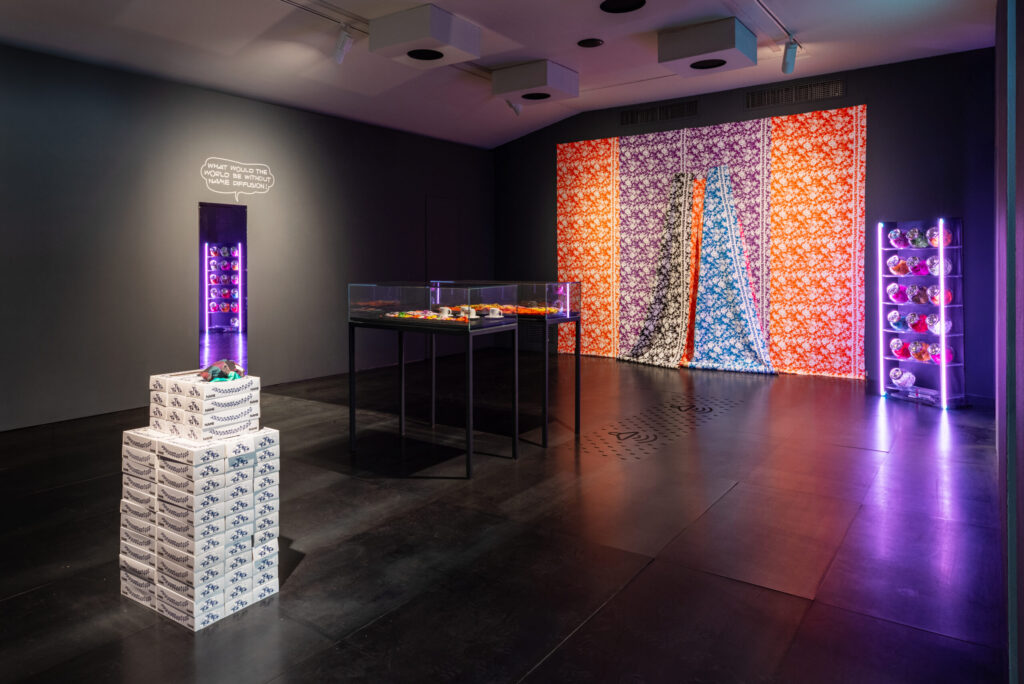
The exhibition spans from her early works in the 1950s to her more recent textile-based creations, focusing on her experimental use of tailoring scraps and fabric remnants. Positioned between sculpture, installation, and ready-made, these works transform discarded materials into powerful, space-filling presences. Themes such as language, migration, gender, and consumer culture emerge throughout her oeuvre, affirming Marion Baruch as a radical and boundary-defying voice in contemporary art.
Past Exhibitions
Retroscena. Stories of Resistance and Dissent in the Della Ragione Collection – from September 28, 2024 to April 2, 2025 (ENDED)
From September 28, 2024, to April 2, 2025, the Museo Novecento presents the exhibition Retroscena – Stories of Resistance and Dissent in the Della Ragione Collection, curated by Sergio Risaliti, Eva Francioli, and Chiara Toti.
The exhibition explores the relationship between artists and the fascist regime through works by masters such as Scipione, Mario Mafai, Antonietta Raphaël, Renato Guttuso, and others who lived under or opposed fascism. Alberto Della Ragione, a naval engineer and collector, supported many of these artists and developed close personal and professional bonds with them.

The selected works reveal both the political activism and the ethical struggles faced by these artists during one of Italy’s darkest periods. The exhibition invites visitors to look beyond the surface to uncover the emotional depth and internal resistance expressed in the art of this era.
Oleksandra Horobets – Ho paura di disegnare mia madre – from September 23 to October 30, 2024 (ENDED)
Until October 30, 2024, the Museo Novecento in Florence will showcase the video installation Ho paura di disegnare mia madre (“I am afraid to draw my mother”) by the young Ukrainian artist Oleksandra Horobets. Curated by Sergio Risaliti and Stefania Rispoli, this immersive work takes place on the museum’s first floor, delving into the intricacies of memory and family relationships.
The installation originates from a short 16 mm documentary filmed in 1984 at an orphanage in Kharkiv, Ukraine, which Horobets discovered by chance in January 2022. The artist reinterprets the original footage by adding animated drawings and snippets of stories inspired by childhood memories. The sound has been almost entirely removed, preserving only the spoken Ukrainian dialogue, creating a bridge between past and present.
Ho paura di disegnare mia madre reflects on how the mind reconstructs memories, blending sensations and different layers of reality. Additionally, it examines the power of images—whether in art, photography, or cinema—and the connection between representation and authority. The projection is complemented by drawings, texts, and documents, offering a glimpse into an editing room where the artist reflects on emotional bonds and family dynamics. With a surreal and sometimes bittersweet tone, Oleksandra Horobets explores themes of memory, play, anxiety, and the conflicts that arise from these experiences.
Louise Bourgeois – Do Not Abandon Me – from June 22 to October 20, 2024 (ENDED)
In celebration of its tenth anniversary, the Museo Novecento proudly presents Do Not Abandon Me, a major exhibition of works by Louise Bourgeois, organized in collaboration with The Easton Foundation. Curated by Philip Larratt-Smith and Sergio Risaliti, the exhibition delves into the artist’s exploration of the mother-child relationship, a central theme in her work.
The exhibition spans the spaces of the Ex Leopoldine building at the Museo Novecento, featuring nearly one hundred pieces, including gouaches from the 2000s and sculptures in fabric, bronze, marble, and other materials. One of the standout pieces is Spider Couple (2003), a sculpture that encapsulates the tension between protection and vulnerability. The intimate connection between Bourgeois’ work and the historic architecture adds depth to her reflections on motherhood, dependency, and the fragility of life.

Do Not Abandon Me addresses Bourgeois’ lifelong fear of abandonment, a theme that resonates throughout her career. The artist’s exploration of motherhood and its inherent anxieties shaped much of her identity. As she grew older and increasingly dependent on others, her work revealed an unconscious return to the relationship with her own mother, bringing a profound emotional complexity to her later creations.
Below are some of the special exhibitions we visited.
“Ritorni. From Modigliani to Morandi” – from March 23 to September 15, 2024
One of my big expectations for the Modigliani exhibition was to see his famous self-portrait and show it to Aurora. The work, created by the artist born in Livorno, Tuscany, is one of the most valued in the world and comes from São Paulo, Brazil! Yes, this piece was at the MAC, the Museum of Contemporary Art at the University of São Paulo as a donation from Yolanda Penteado and Francisco Matarazzo Sobrinho.

I took a photo of the work and the frame with Aurora there, as a record “for posterity.” Since she likes to draw faces very much, I thought about stopping so she could make her interpretation of Modigliani’s self-portrait in her sketchbook. But she didn’t want to, perhaps due to the lack of a place to sit nearby, perhaps due to the crowd in the area. She preferred to draw a scene of Florence by Ottone Rosai, as shown above.
André Butzer. “Liebe, Glaube und Hoffnung” (Love, Faith, and Hope) – from March 1 to June 9, 2024
André Butzer is a German artist born in Stuttgart in 1973. The exhibition “Love, Faith, and Hope,” curated by Sergio Risaliti, features Butzer’s blend of European expressionism and American pop culture.
Alongside names like Jawlensky, Munch, and Kirchner, in Butzer’s artistic biography and training, also play a fundamental role Henry Ford and Walt Disney, to which must be additionally associated the lessons of Cézanne and Matisse, French painters founders of modernism in art and admired by the artist since his youth.

When we saw his work, we thought he represents the new contemporary artist with colorful works that use “recognizable characters,” like a Mickey Mouse in a Disney store. Some works were fun, others a bit grim.

We reflected on what it means to be a successful artist in the 21st century, or at least an artist who makes money with his works. According to the Artsy website, his work with the highest value sold at auction reached £403.2 thousand: it was André Butzer’s “Chips und Pepsi und Medizin (Das Glück),” 2003. But he sells many works for a few thousand euros as you can see here for example.
Opening hours of the Museo del Novecento in Florence
- Summer hours (April 1 to September 30): Open Monday to Sunday, from 11:00 AM to 8:00 PM. Closed on Thursdays. Winter hours (October 1 to March 31): Open Monday to Sunday, from 11:00 AM to 8:00 PM. Closed on Thursdays.
Moreover, the venue is closed on December 25, but open on January 1 and 6, from 11:00 AM to 8:00 PM. For both periods, the last ticket is allowed one hour before closing.
Tickets for the Museo del Novecento in Florence
Below are details for purchasing tickets directly from the museum’s official authorized retailer’s website:
| Category | Price | Online Tickets |
|---|---|---|
| Adult | Euro 9.50 | Buy Here |
| Reduced (18-25 years old and university students) | Euro 4.50 | Buy Here |
| 0-17 years old | Free | Buy Here |
If you enjoyed this article, you can support my work with a coffee here ☕
Another way to support Tuscany.Tips is by booking with one of our trusted partners below — at no extra cost to you.
FIND YOUR NEXT STAY
Book your stay in Italy or anywhere in the world with our partner Booking.com!
You'll find the best deals and support our website. Thank you!
BOOK TRANSFERS AND TOURS ONLINE
Book transfers, tours, and excursions in Italy and around the world with our partner Get Your Guide.
NEED DATA IN ITALY?
Get 5% off your Holafly eSIM with code TIPS—fast, easy, and reliable!
